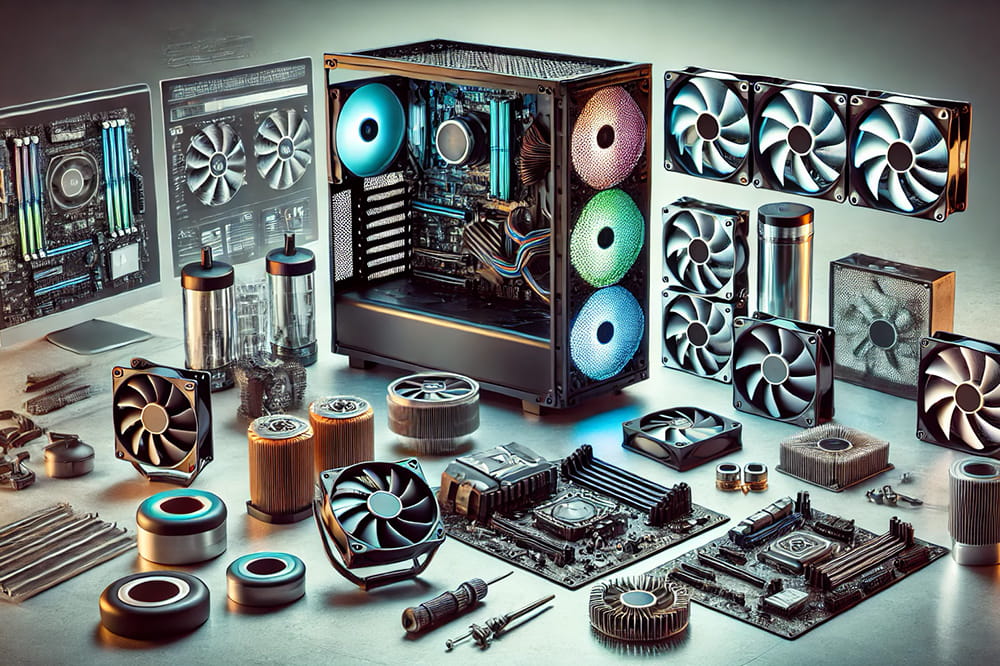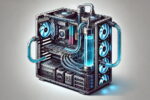Keeping your PC well ventilated and cooled is crucial to its performance and longevity. A system that is not properly cooled can suffer from overheating, which reduces efficiency and can damage components. In this guide, we show you how to improve the ventilation and cooling of your PC, from simple solutions to specialized products that make a difference.
In this URL you will find everything you need to keep your PC well cooled.
Why is your PC’s cooling important?
When your PC’s components, such as the CPU or graphics card, work hard, they generate heat. If this heat is not dissipated properly, internal temperatures can rise, which negatively affects performance and can reduce the lifespan of your components. Good cooling not only keeps your system in top condition, but also helps prevent problems such as performance drops or unexpected shutdowns.
Tips to Improve the Ventilation and Cooling of Your PC
1. Optimize the Air Flow in Your Case
One of the first steps to improve ventilation is to make sure that the airflow inside the case is optimized. To do this, follow these tips:
- Fan placement: Install fans that generate adequate airflow. Place fans that bring in cool air at the front or bottom of the case, and fans that expel warm air at the back or top.
- Tidy cables: Poorly organized cables can obstruct airflow. Use cable ties or cable management systems to keep cables organized and prevent them from interfering with ventilation.
- Regular cleaning: Dust is one of the biggest enemies of ventilation. Clean your PC’s fans and dust filters every few months to ensure that airflow is not obstructed.
2. Choose a Case with Good Airflow
Not all cases are created equal in terms of ventilation. If you’re having cooling issues, it may be time to upgrade to a case designed to maximize airflow. Cases with mesh panels on the front allow for more fresh air. Some recommended models include:
- Fractal Design Meshify C: With a mesh front and plenty of room for additional fans, this case is ideal for keeping temperatures down.
- Corsair 4000D Airflow: A case designed to maximize airflow, with room for multiple fans and water-cooling radiators.
3. Add High-Quality Fans
If your case is already well-organized but you’re still experiencing heat issues, you can improve ventilation by adding more fans or replacing existing ones with higher-quality models. Recommended fans:
- Noctua NF-A12x25: Known for their low noise and high performance, these fans are a great choice for improving ventilation without increasing noise.
- Corsair LL120 RGB: If you’re looking for a balance between performance and aesthetics, these fans offer good airflow and customizable RGB lighting effects.
4. Liquid Cooling for Overclocking and High-Performance Systems
If you’re running a high-performance system or overclocking your CPU or GPU, liquid cooling can be a more efficient option than conventional fans. There are two main types:
- AIO (All-In-One) liquid cooling systems: Easy to install and maintain, such as the NZXT Kraken X63 or Corsair iCUE H150i, they offer excellent thermal performance and take up less space than large air coolers.
- Custom liquid cooling systems: For advanced users, a custom loop allows you to cool both the CPU and GPU with a single liquid circuit, although it requires more maintenance and technical knowledge.
5. Upgrade Your CPU Cooler
If your CPU is running hot, replacing the stock cooler with a more powerful one can make a big difference. Tower coolers offer better heat dissipation than standard models. Some recommended options include:
- Noctua NH-D15: One of the most efficient air coolers on the market, ideal for high-performance CPUs.
- Cooler Master Hyper 212: An inexpensive but effective cooler for those looking to improve cooling without breaking the bank.
6. Monitor Temperatures with Software
Using monitoring software will help you keep your PC’s temperatures under control and adjust fan speeds as needed. Some popular tools include:
- HWMonitor: Allows you to monitor the temperatures of your CPU, GPU, and other components in real time.
- MSI Afterburner: Ideal for adjusting graphics card fan curves and monitoring their performance.
7. Replace Thermal Paste
Thermal paste is the material that is placed between the CPU and the heatsink to improve heat transfer. Over time, this paste can dry out and lose effectiveness, so replacing it every one to two years is recommended. Some of the best thermal pastes are:
- Arctic MX-6: An affordable and good-performing option for most users.
- Thermal Grizzly Kryonaut: Considered one of the best in terms of thermal conductivity, ideal for overclockers.
8. Use Pads or Heatsinks for M.2 SSDs
M.2 SSDs, especially high-performance NVMe ones, can also generate a lot of heat. Installing a heatsink for these drives can help keep their temperatures under control and prevent thermal throttling, which slows down performance when the SSD gets too hot.
Key Products to Improve Your PC’s Cooling
Here is a list of key products that will help you improve your PC’s ventilation and cooling:
- High quality fans: Noctua NF-A12x25, Corsair LL120 RGB
- Cabinets with good airflow: Fractal Design Meshify C, Corsair 4000D Airflow
- CPU coolers: Noctua NH-D15, Cooler Master Hyper 212
- AIO liquid cooling systems</strong >: NZXT Kraken : EKWB EK-M.2, Sabrent M.2 2280 SSD Rocket Heatsink
Conclusion
Improving the ventilation and cooling of your PC not only ensures optimal performance, but also extends the lifespan of your components. From optimizing airflow inside your case to installing liquid cooling systems, there are multiple ways to ensure your rig runs at safe temperatures. Remember to keep your PC clean and well organized, and consider upgrading to higher-quality products if you experience problems. overheating.







